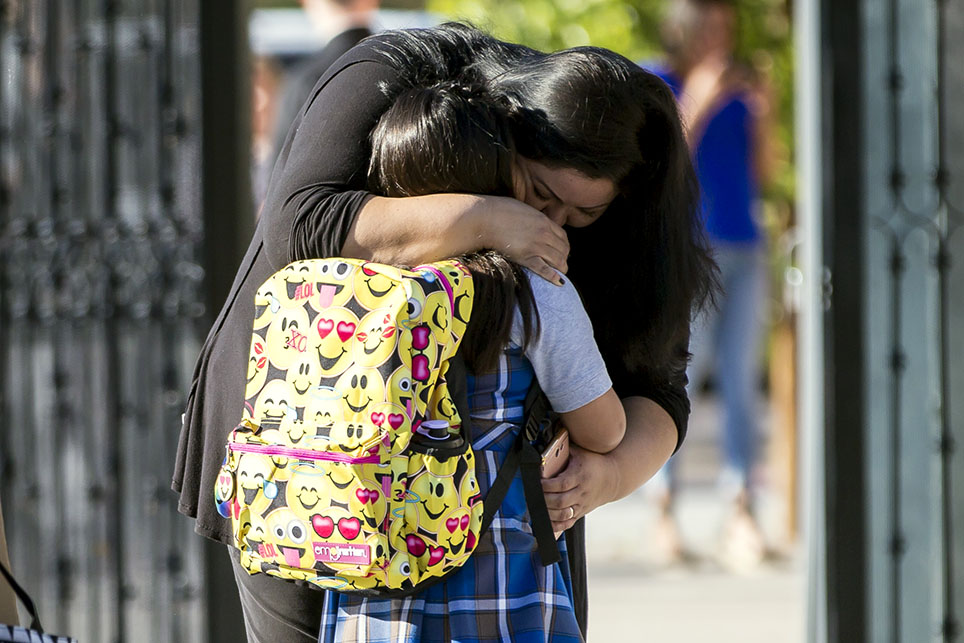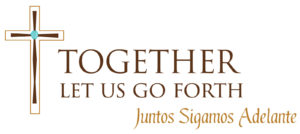


Arizona’s students spend 180 days in the classroom. For private school parents, financing their ticket in, so to speak, can feel like a 365-day affair.
By the Numbers
15,002
Total student headcount (preschool, elementary and high school)
$21.6 million
Unmet funds for need-based scholarships from Catholic Education Arizona alone
$5,500
Average elementary school tuition per year (‘Catholic’ rate)
~$13,500
Average high school tuition per year (‘Catholic’ rate)
6
Total number of diocesan high schools
29
Total number of diocesan elementary schools
There’s applying for scholarships, waiting for the decision, calculating expenses after the result comes in, making the actual tuition payment and repeating the process for the following school year long before the current one ends. Parents could take multiple trips around the scholarship loop per student tuition organization if they really needed the help and wanted their child in a Catholic school.
There’s at least a dozen student tuition organizations with Catholic Education Arizona and the Brophy Community Foundation likely being among the most familiar. Still, millions of dollars of verified scholarship need go unmet each year.
Catholic Education Arizona meets less than half of the demand for need-based scholarships in a given school year. Until the word and trust get out to more Arizona residents about the ease of using no-cost tuition tax credits to support Catholic education in the Diocese of Phoenix, families will still receive a painful rejection letter proclaiming remorse that not enough scholarship funds were available.
That’s why when diocesan leaders looked far into the future of the diocese and began planning for its needs via the ongoing “Together Let Us Go Forth ~ Juntos Sigamos Adelante” campaign, $4 million for Catholic school tuition was among its main efforts.
Scholarship funds will go to students whose families would struggle to pay tuition otherwise. That means families who could afford a tuition payment or a utility bill or mortgage, but not both. It could mean families who could afford tuition, but it might require a side hustle job to finance it.
For Sue Talentino, calculating Catholic tuition is clear cut. Her family couldn’t do it without scholarships. And for the first five years, they didn’t. Then they returned to Arizona.
The girls spent a brief stint in public school until Talentino visited Sacred Heart School in Prescott. The principal’s gentle reminder about the tuition tax credit hit her like a bolt of lightning. They enrolled that same week and blended in so quickly, they rarely saw themselves as transfer students.
Catholic School Tuition Assistance
This campaign case will provide scholarships to families with financial needs, particularly those who often have to choose between a Catholic education for their children or meeting their financial obligations.
The Talentino twins have been at Sacred Heart since fifth grade and are now entering eighth. Religion is their favorite subject. It’s both a class and integrated throughout, which has been a great grounding tool, their mom said, especially as they prepare to transition into a public high school. One of the girls made the sign of the cross during a regular moment of silence when the family lived in Texas and got teased for it.
Elementary school tuition averages roughly $5,000 per year. Multiplied by two, “We don’t have an extra $1,000 sitting around” every month, Talentino said. High schools cost a conservative $12,000-$15,000. That’s like buying a new small/midsize sedan every year.
John and Melissa Fees grew up at separate East Valley Catholic schools and both had parents who were educators. They opted to put faith, family and education “in the same circle” with four of their five children having connections to a local Catholic school. Melissa described it as “transformative” for her family and the couple tries to ensure it’s accessible to everyone.
Pope emeritus Benedict XVI shared similar thoughts with American Catholic educators in 2008. He acknowledged the role saints, religious and laity played in helping generations rise from poverty and called it “a highly commendable opportunity for the entire Catholic community to contribute generously to the financial needs of our institutions.” They in turn, nurture the soul of a nation, he continued.
“Set against personal struggles, moral confusion and fragmentation of knowledge, the noble goals of scholarship and education, founded on the unity of truth and in service of the person and the community, become an especially powerful instrument of hope,” the pope said.





